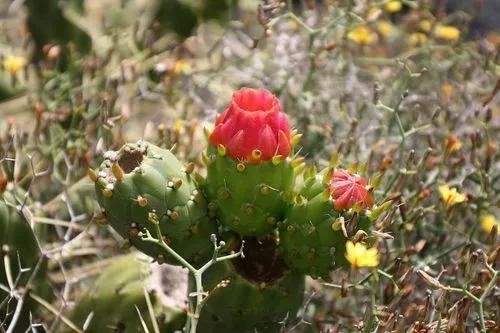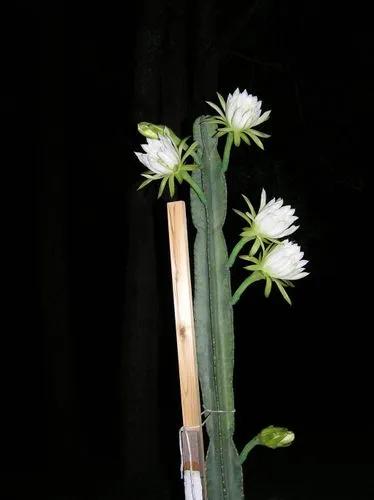Cereus Monstrose is a branching, tree-like cactus with monstrously twisted growth patterns brought on by a spontaneous mutation. It has lovely white flowers that only bloom at night and serve as a source of nectar for moths and bats.
Cereus Monstrose Care
Cereus peruvianus 'Monstrosus'



Cereus Monstrose, also known as Cereus peruvianus 'Monstrosus' is native to South America. This cactus is a popular choice for those interested in adding an unusual and eye-catching element to their indoor or outdoor garden. It is also grown extensively as an ornamental plant all over the world. The height and spread of an apple cactus can range from 15 to 20 feet (4.57-6.07m). Cereus Monstrose comes in a number of variations, but the Monstrous variety is the biggest. Each appendage grows in a columnar pattern, eventually reaching a diameter of around 6 inches, its main identification feature.
How to Care for the Plant

Water

These cacti have acclimated to surviving in dry, arid conditions, so it's crucial to avoid overwatering them. In general, it's best to allow the soil to dry slightly between watering sessions and prevent the plant from sitting in stagnant water. Strike the balance, and your cactus will reward you with its resilience.

Pruning

Thankfully, pruning is often unnecessary for these slow-growing cacti, as they naturally maintain a compact shape. However, if some maintenance is needed, the best time to prune is in the spring or summer. Armed with clean, sharp scissors or pruning shears, carefully remove any damaged or overgrown branches, giving your cactus a refreshed appearance.

Fertilizer

Give your cactus a boost by fertilizing it with a balanced fertilizer every few months. This gentle feeding routine provides the nutrients it needs to thrive.

Sunlight

Bright, indirect light is the secret ingredient to success for these cacti. While they thrive under its gentle glow, they can also tolerate some direct sunlight. Strive to provide them with around 4-6 hours of sunlight each day, and watch them thrive in the radiance of nature's spotlight.

Soil

A suitable soil medium for these cacti can consist of a specialized cactus mix or a blend of potting soil with perlite or pumice. This combination ensures optimal drainage and creates a supportive environment for their growth.

Propagation

To expand your collection of these unique plants, you can propagate them through stem cuttings or by planting seeds. Ensure your materials are sterile and free from diseases to prevent any unwanted pathogens from affecting the new plant's growth.

Temperature

Picture this cactus basking in the warmth of its native, arid environments—it's a vision that guides your care. Place it in a sunny spot with temperatures ranging between 70-80°F (21-26°C) for its optimal well-being. Emulate the climate it loves, and it will flourish.

Container

Opt for a shallow pot with excellent drainage capabilities, providing ample space for the plant's roots to stretch out comfortably.

Fun fact

Here's a quirky tidbit about these fascinating plants—they're occasionally referred to as the "Ming Thing." Why, you ask? Well, their distinctive, twisted growth habit bears a resemblance to the iconic "Ming" vases from ancient Chinese culture. Talk about nature imitating art!

Popularity

119 people already have this plant 23 people have added this plant to their wishlists
Discover more plants with the list below
Popular articles






